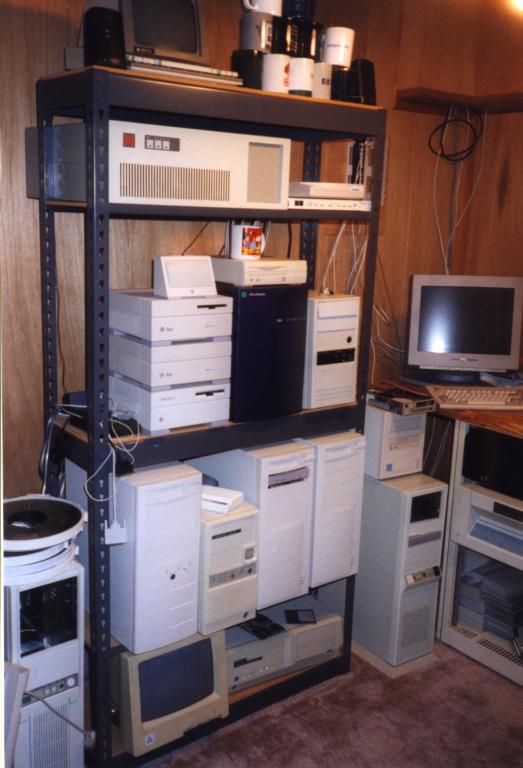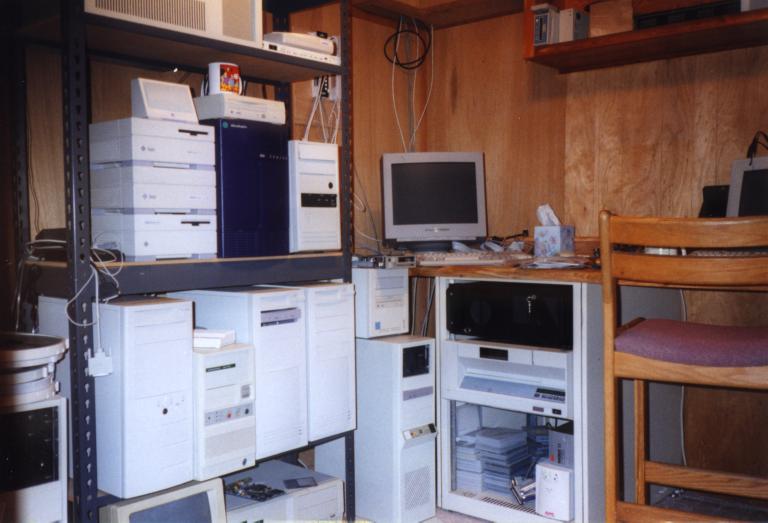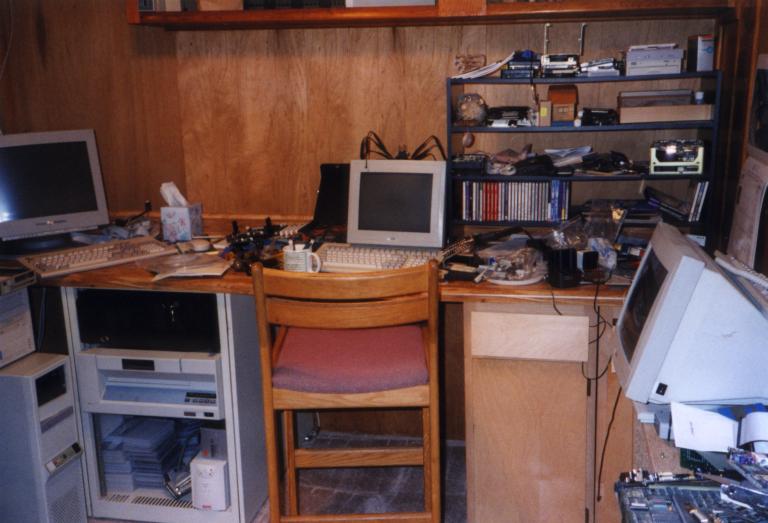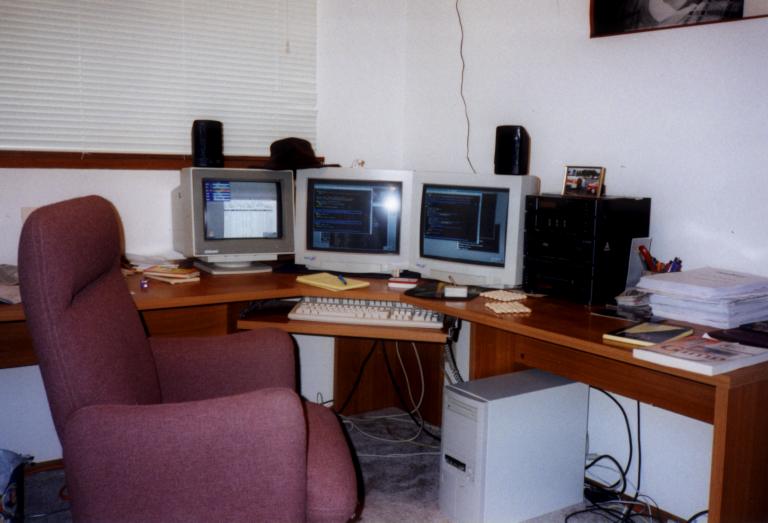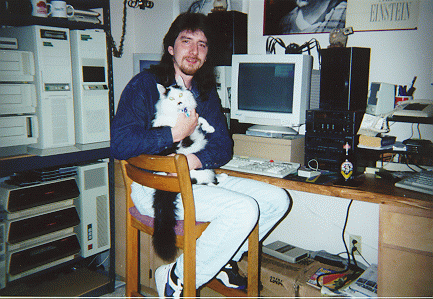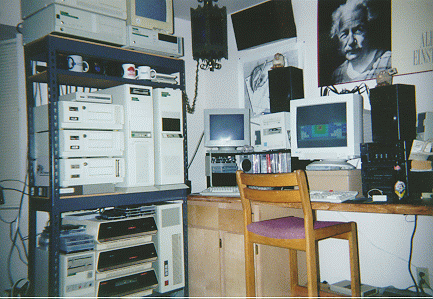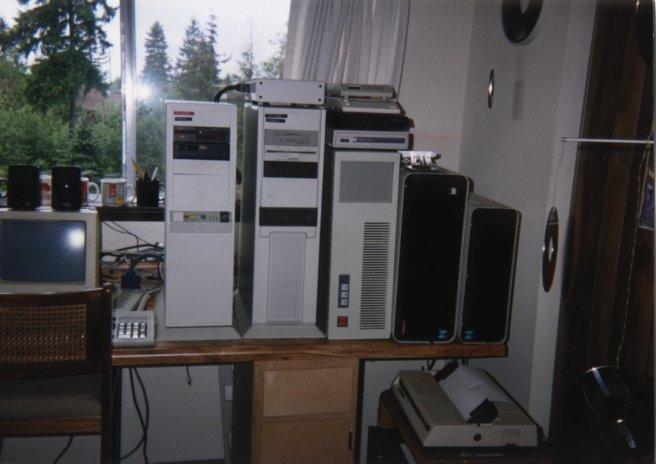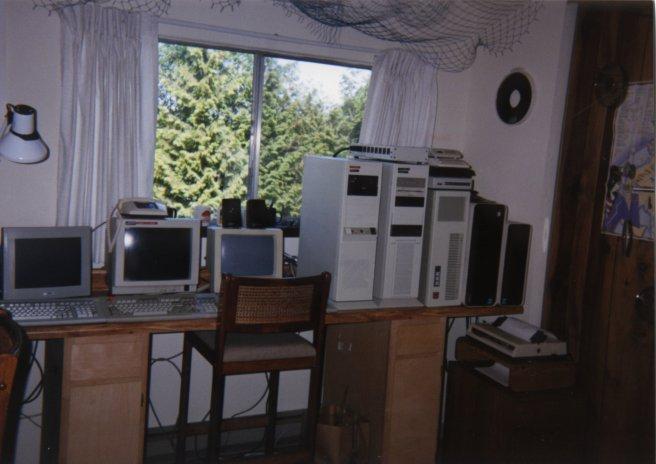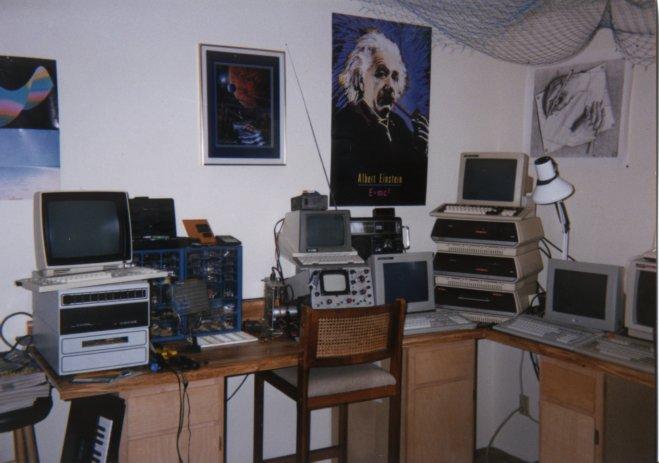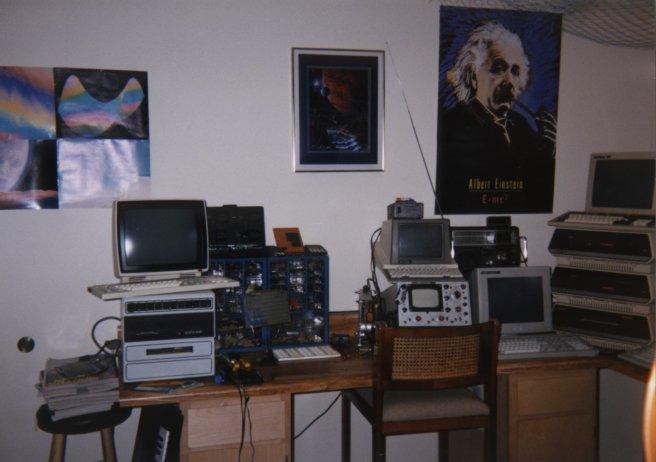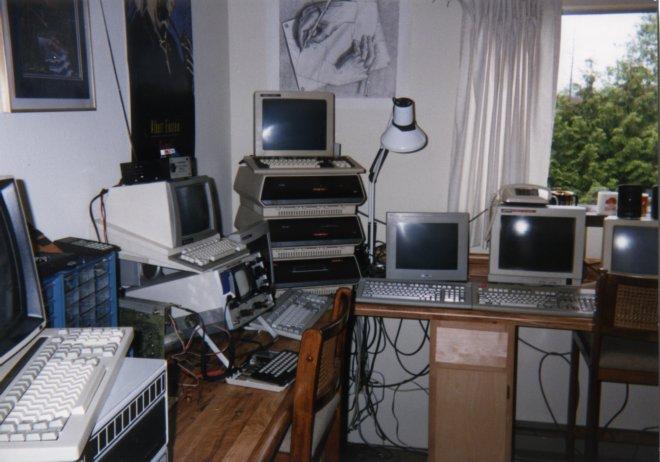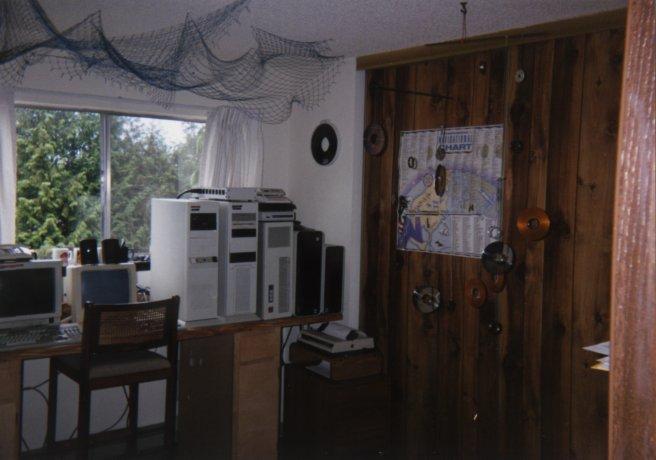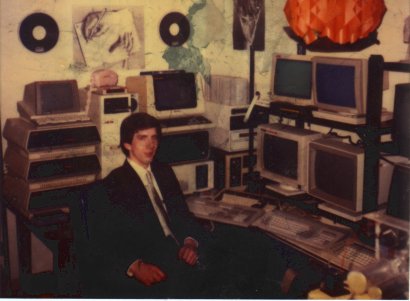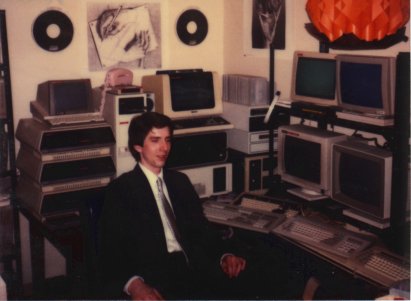Well.. Everyone's gotta have a hobby.
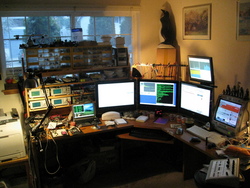
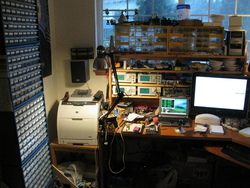
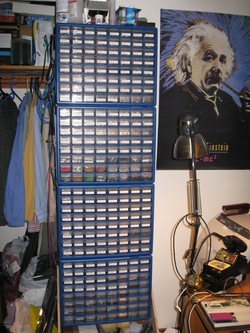
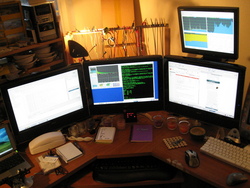
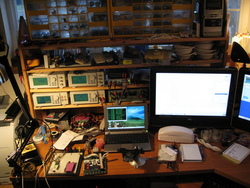
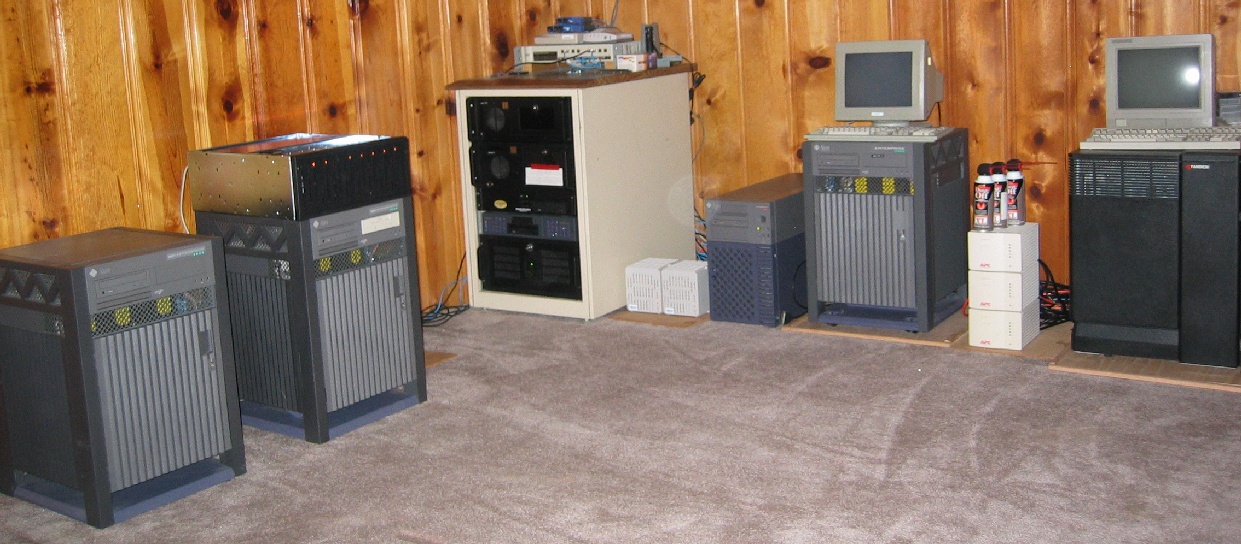
This latest in the evolutionary tract of my home computing and development environment (as of 2003 or so). I have "upgreaded" my server farm in the basement and have had to move the servers from a little room in the basement to the main open area to help dissipate the heat. (That $310 per month electric bill to power these systems is also heating my basement as a side effect). The little white bricks on the floor are APC 1250 VAC Line Conditioners. These are a must in my area inthat the electricity may be very expensive but its not very clean and it will kill your systems over time.
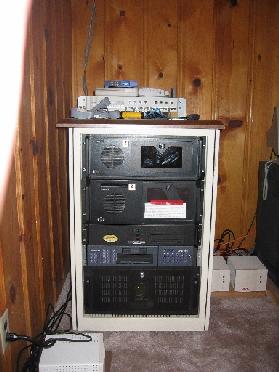
This is a standard 19 inch rack. On top of the rack is a small blue Linksys 8 port 100MB switch used for a secondary 100MB subnet for all the systems. Below that is a FlowPoint 144KB iDSL bridge to Speakeasy (my ISP) via Covad . This is iDSL due to the fact that I am 3.7 miles from the CO (Central Office) and as such can't get the ADSL that most others do. The iDSL is a mix of ISDN and DSL. It basicly takes the two 64K CCC (Clear Channel Capability) channels and the 16K channel to the switch of the old standard ISDN BRI (Integrated Services Digital Network - Basic Rate Interface) and rolls it all into one 144K DSL like channel. It runs me $89/month plus all the fees and taxes then bump it up to about $103/month but it is much more reliable than my cable modem and I have two static IP addresses. Next to that is an RCA Cable modem from ATTBI/ ComCast and below that is my main 100MB 24 port Linksys switch.
Inside the rack Starting from the top in the 4U form case is a Wintel box running FreeBSD . This is my router sporting a Soekris Engineering vpn1401 hardware crypto and compression accelerator, 3 x Dual Port 100MB PCI Intel Pro Ethernet cards for a total of 6 x 100MB Ethernet ports, and 2 x Digital DEFPA PCI FDDI Controllers. Second is another 4U Wintel box running FreeBSD . This is my DNS and NFS server exporting 2 x 80GB NFS volumes with 2 x 3COM 3c905 Ethernet cards and 2 x Digital DEFPA PCI FDDI Controllers. The third from the top, in the 2U form case, is a Sun UltraSPARC AXi with a 333 MHz UltraSPARC IIi /w 2M Cache CPU, 1GB RAM, 1 x 9G SCSI, 1 x 18G SCSI, and 2 x HME Ethernet cards. This is my Web Server. The fourth, also in the 2U form case, is another Sun UltraSPARC AXi with a 440MHz UltraSPARC IIi /w 2M Cache CPU, 1GB RAM, 2 x 18G SCSI, and 2 x HME ethernet cards, and is running as a Jakarta/Tomcat Java Servlet engine. And the unit on the bottom in the 4U form factor case is a Sun UltraSPARC AXmp with 2 x HME Ethernet cards and 4 x 64Bit UltraSPARC-II CPUs, 2GB RAM, 5 x 18.2GB SCA SCSI drives and is my Oracle Database Server.
A short note about the Sun AXi and AXmp systemboards. They are built by Sun as an OEM product and Sun does NOT support these to the end user. Whats more is that although they are built by Sun they are NOT as compatible as Sun would have you to believe. I have found that these systems do not support the Sun PCI FDDI addapters. One would have thought that a Sun systemboard would at the very least support Sun addapter cards but that is not the case with the Sun OEM boards. The only comment I could get from Sun support is that they did not "Document" the FDDI boards would work with these systems. Unfortuantly they don't "Document" that any of the Sun boards will work with these systems, just that a "Wide range of compatible products exists".
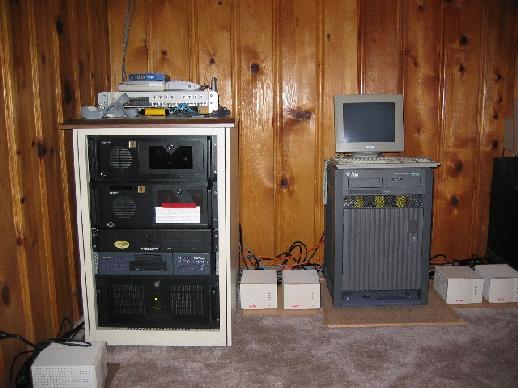
This is my 19 inch rack and my Sun Ultra E3500 together. The rack looks larger but its closer in the photo. The rack is realy only about 2 inches in width larger than the E3500.
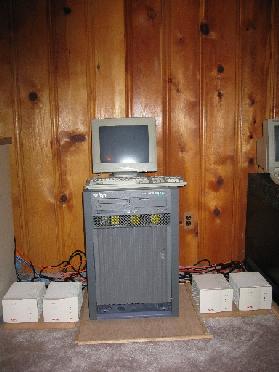
This little unit is my pride and joy. It is a Sun Ultra Enterprise E3500. This sleek and fashionable baby is equipped with 8 x 400Mhz 64Bit UltraSPARC II CPUs /w 8MB of cache each (501-5762) and 8GB of RAM not to mention 8 x 9.1GB FC-AL (Fibre Channel-Arbitrated Loop) Drives. This system also has an SBUS QFE (Quad Fast Ethernet) and 2 x SBUS FDDI network cards. Quite a nice box!
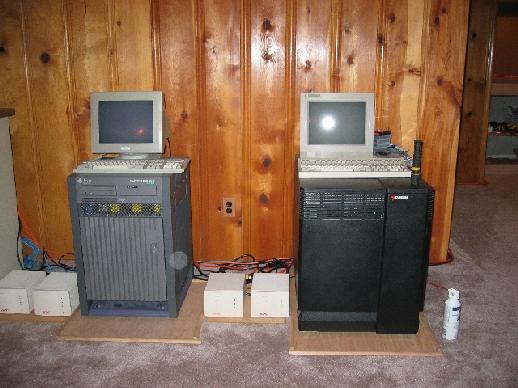
This is my Sun Ultra E3500 and my SGI Challenge L together.
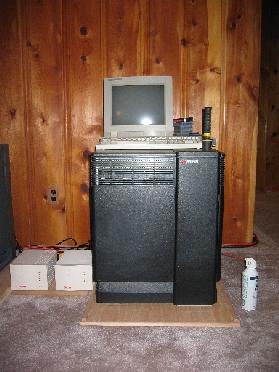
This is my Big Bad Tandem labeled SGI Challenge L. This box has 12 x MIPS R10K 64 Bit CPUs (Yes that is twelve CPUs, 3 CPU cards with 4 CPUs each) , 2GB of RAM, 2 x FDDI network interfaces, 2 x VME Fast Ethernet (vfe) interfaces, and 4 x 4.5GB HVD SCSI Drives. It is running Irix (Unix) 6.5.19m and I have built all the current GNU tools for it. This system also has a current Java 1.4.1 environment. The cooling fans are a bit loud but it is still quite a usable and productive system.
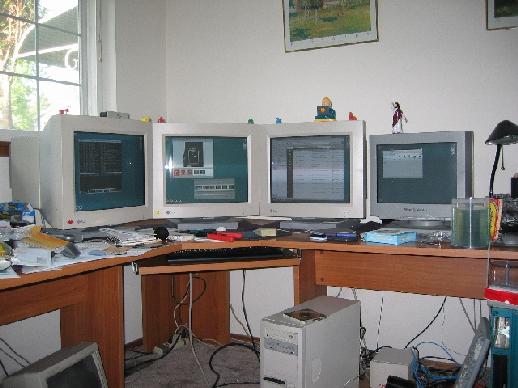
This is a photo of my home office. Three Sun GDM20 monitors and an SGI GDM17 add up to four displays. I have a Matrox G450 (dual display) card in the AGP slot and two Matrox Millennium II PCI cards. Under Linux with XFree86 this works quite well and gives quite the real estate. It does get a bit hot in the Summer and unfortunately when I open the window I am reminded my neighbor across the street thinks he can play eletric guitar... (he cant..)
